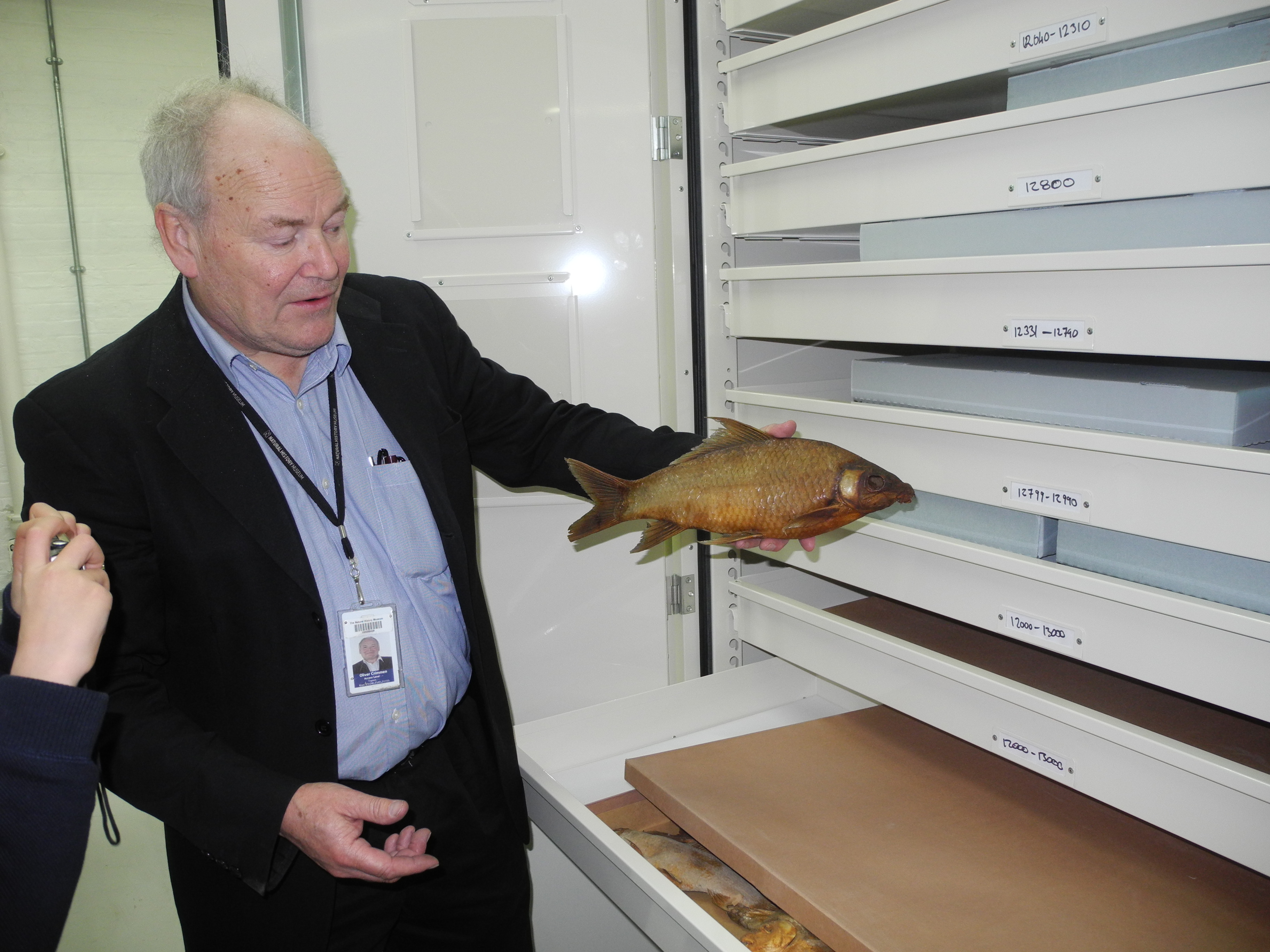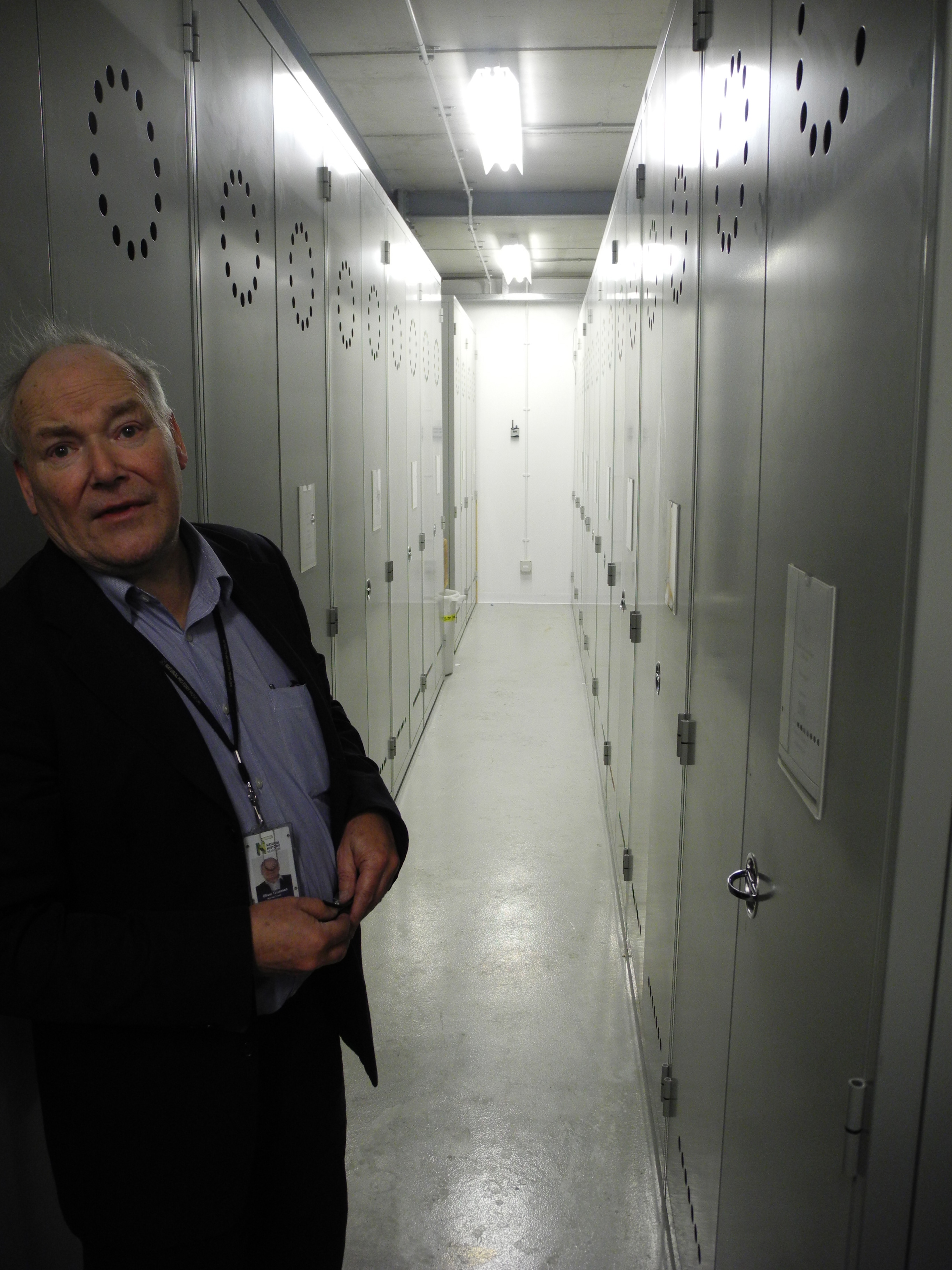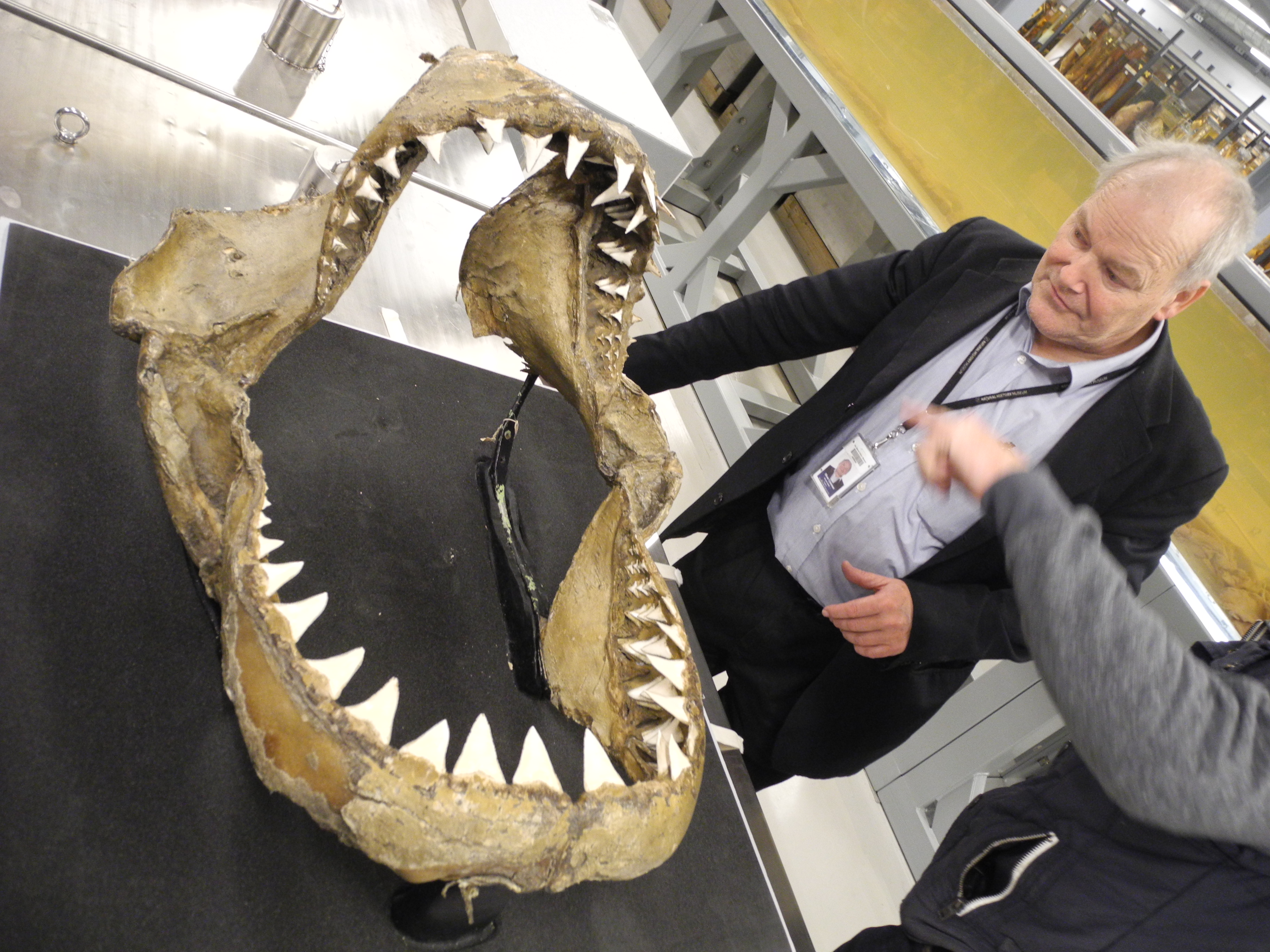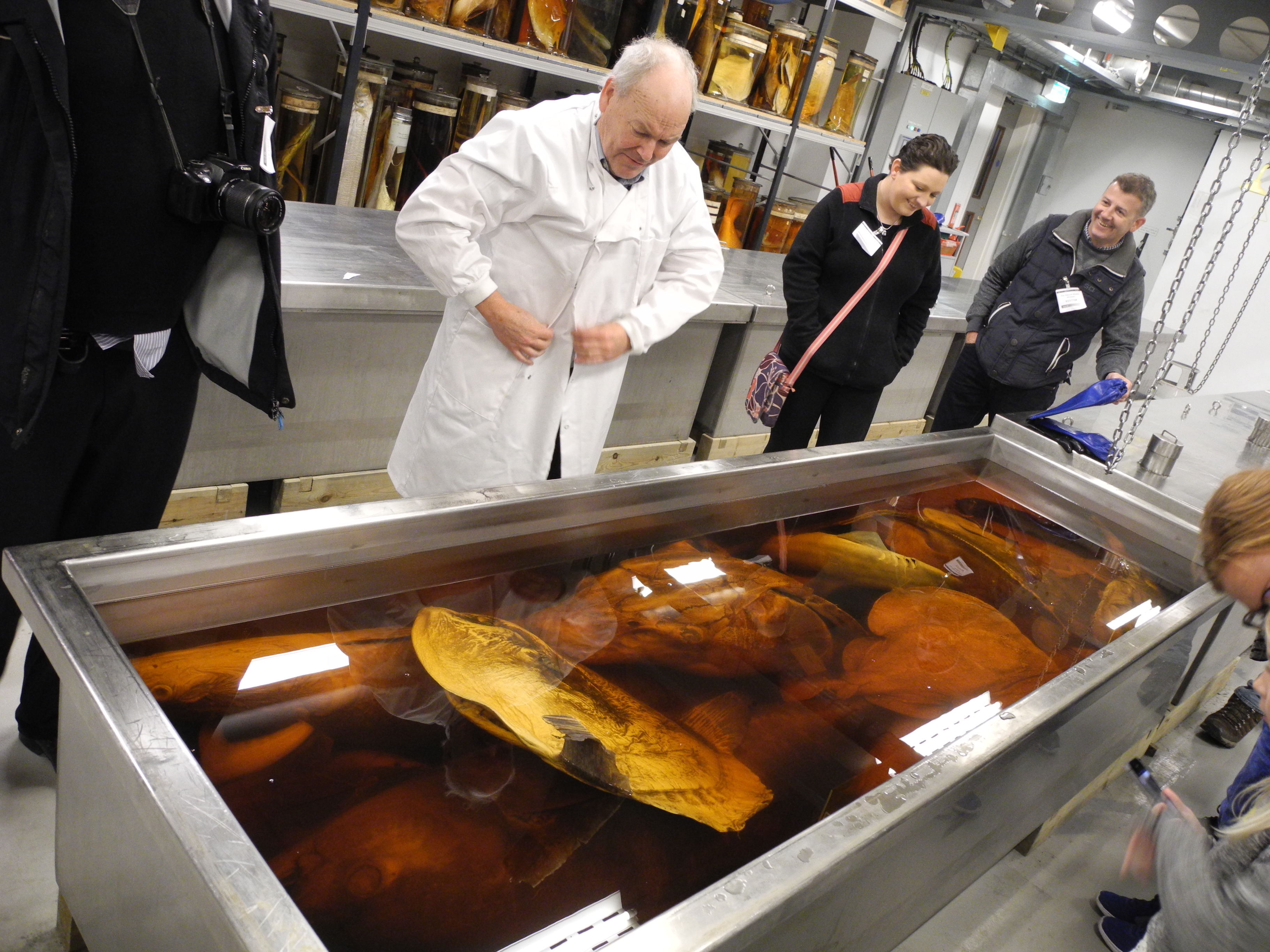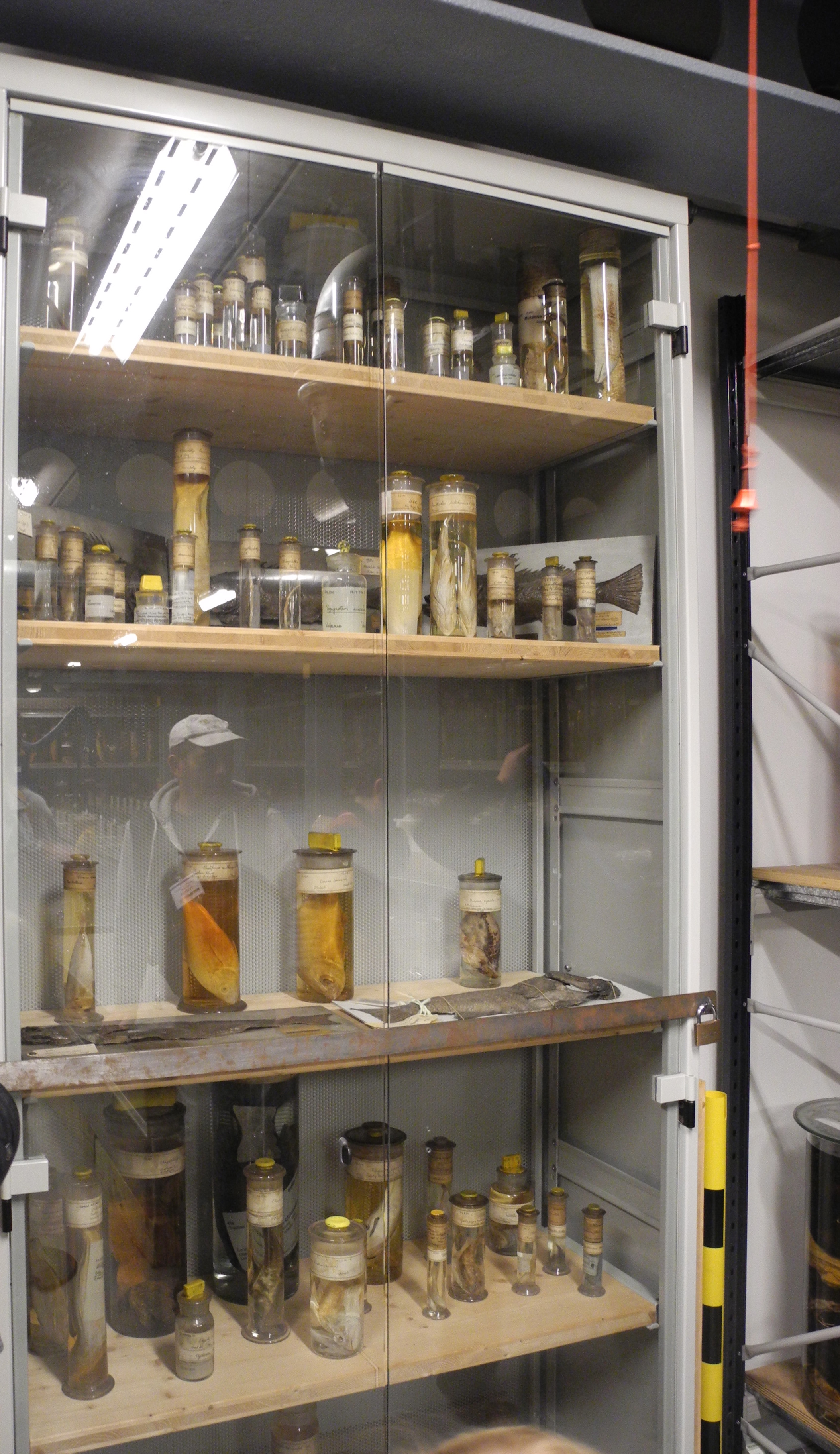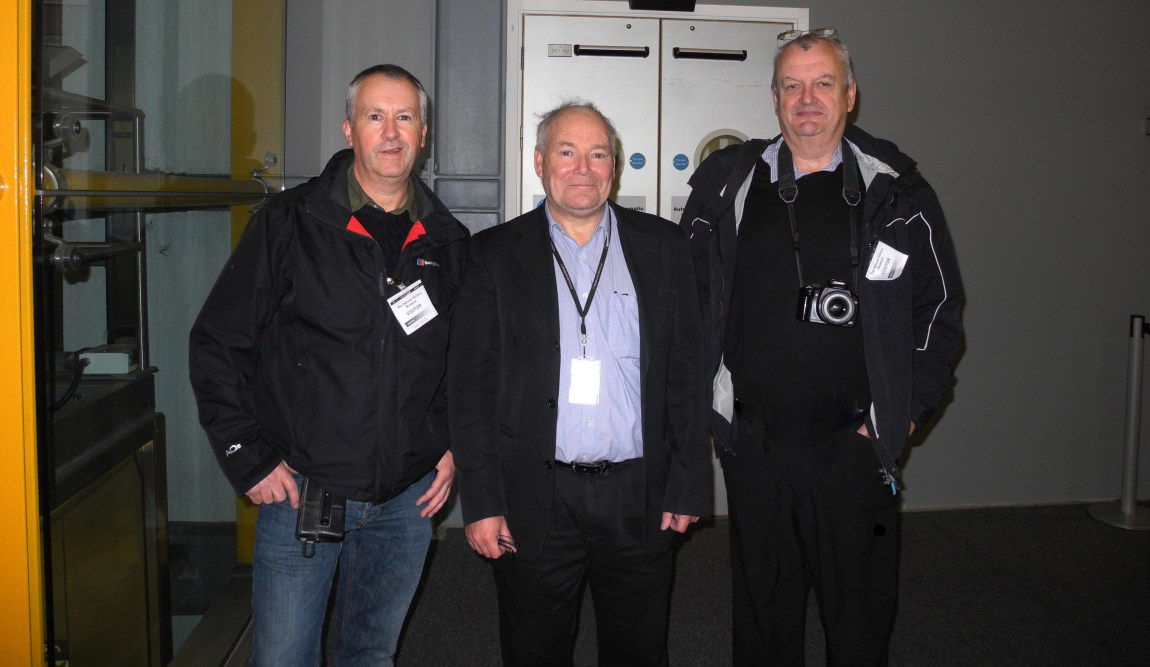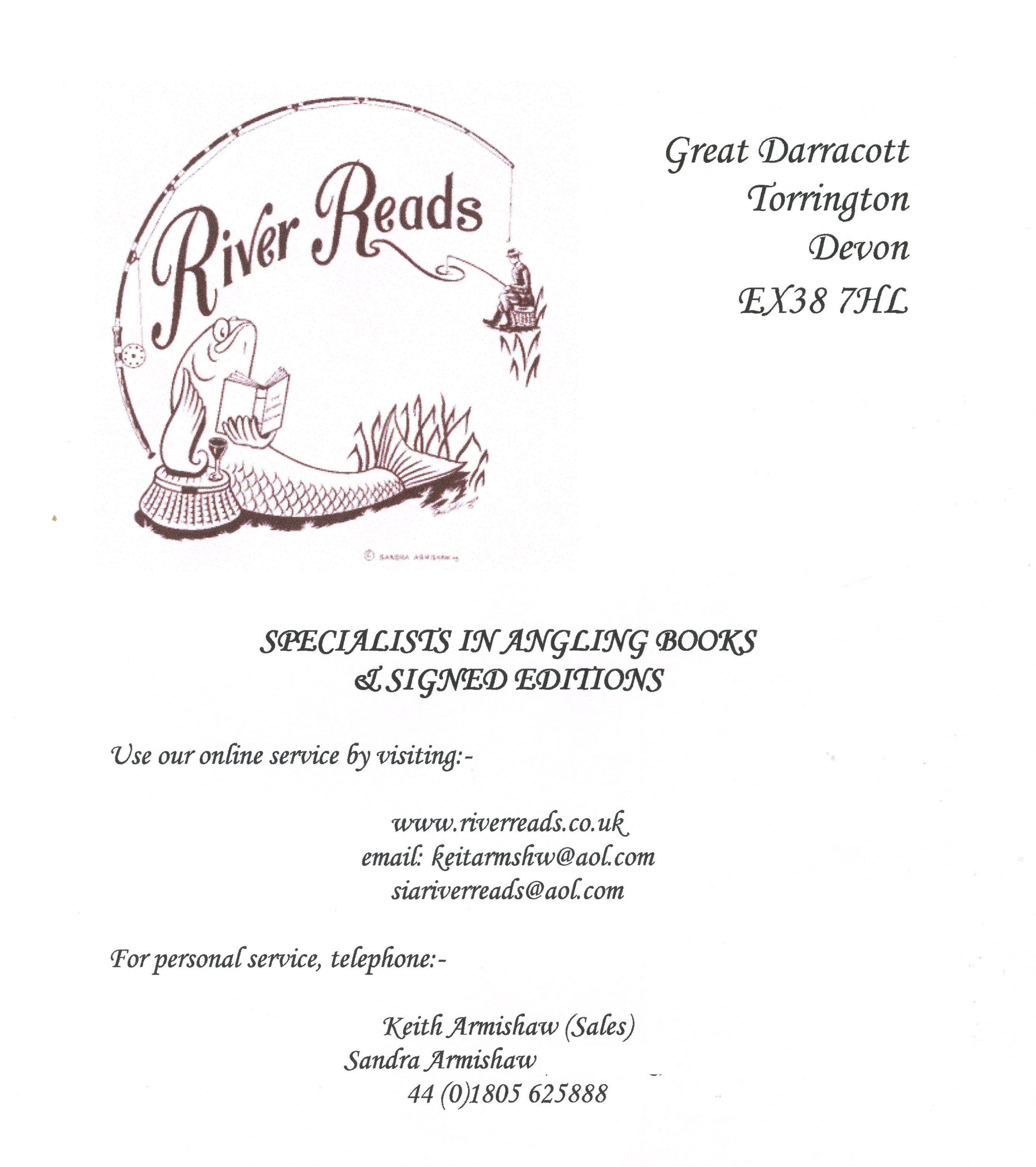From time to time something interesting pops up in life and needs to be seized before the opportunity is gone. I received an email from Chris Vaughan at Lynton a gentleman I had met very briefly at the end of a talk I delivered at Lynmouth Pavilion a couple of years ago.
Hi Wayne
– It’s Chris Vaughan from Lynton.
I have a trip coming up for a few friends and thought you might be interested. A good friend of mine is Ollie Crimmen who is the curator of fisheries at the Natural History Museum in London. There’s a behind the scenes tour with access to q and a from Ollie in the ‘spirit room’ – basically a large area with more fish in glass jars than you would have ever seen plus giant squid etc. Also Ollie is probably ‘Mr Fish’ of Europe and any questions you may have he’ll probably know the answer.
If you think you might be interested in joining me for the day let me know. I’ll be there on Tuesday 20th December. It might make a good section for your column.
Let me know
Kind regards
Chris
After an exchange of emails between Chris and I the time off work was booked and I invited Keith Armishaw of River Reads to join me as I felt sure he would jump at the chance to meet Mr Fish of Europe and get a look behind the scenes of one of the UK’s treasure troves of Natural History.
And so on a cold bright December day Keith and I found ourselves walking through Hyde Park admiring flocks of Parakeets and taking in the splendor of the 1872 Albert Memorial.
From here we walked on past the Royal Albert Hall to the Natural History Museum a highly impressive building that blends both old and new in a display of architectural majesty. Dodging past the masses of visitors we met with Chris and the group within the imposing foyer overlooked by the famous Diplodocus cast that has stood in Hintze Hall for 35 years.
From here it was down to a side entrance to be issued with ID passes before meeting with Ollie Crimmen to commence our tour. After a short delay Ollie arrived and was warm friendly and overflowing with knowledge and enthusiasm from the start. Ollie joined the museum in 1973 at the age of 19 and worked alongside the previous renowned expert on fish Alwyne Wheeler. In his long career he has worked with an intriguing range of people and companies on various projects. These include Damien Hirst and swimwear manufacturer Speedo on a hydrodynamic swimsuit, using sharkskin to reduce drag while in the water.
On our way we met a young scientist who was digitally scanning the huge vertebrae of a blue whale. The 25 metre long skeleton is to be assembled in the Hintze Hall next summer replacing the diplodocus. Each of the 153 backbone and ribs takes several hours to scan with the young scientist explaining that she manages three bones per day.
We moved on into the vast vaults of the museum each containing a vast range of artefacts totaling several kiometres. Ollie slid open a draw to reveal an array of dried fish specimens. He explained that the museum has fish specimens from as far back as the 1600’s. Much of this is a direct result of the Victorians desire to horde and preserve. These collections hold valuable information for the scientists of today with the drying process preserving the vital DNA codes. In addition to these dried fish are many cases of fish skeletons which have had there flesh and skin removed by thousands of carpet beetles bred at the museum for this purpose.
Ollie expertly answered an array of questions as we moved in awe through this vast vault of history. On questions regarding evolution Ollie casually mentioned timescales of ¾ of a million years in fish populations within Lake Victoria as relatively quick.
We came upon the huge dried carcass of a sunfish preserved here since 1838. This solitary 1.5 tonne fish can produce up to 300,000,000 eggs of which only a tiny proportion survive.
We walked into the vast spirit room within which thousands of fish are stored in alcohol. This has been the preferred method of conservation since around 1900; its downside is that it destroys DNA a scientific development that the Victorians had no knowledge of.
Ollie lead us into the centre of the room and unveiled the huge jaws of great white shark. Its teeth as with all sharks designed with their specific prey in mind. The razor sharp teeth rotate as they wear and age ensuring a vital cutting edge to slice through flesh and bone. We discussed the possibility of great whites in British Waters and Ollie could see no reason that these fish could not swim within our waters. We talked of global warming offering our examples of fluctuating fish populations. Ollie took a very impassioned view on this explaining that fish populations and species fluctuate widely over many years influenced by many factors. To draw any conclusions over just a few decades is just not practical.
The vast oceans of the world contain many wonders and mysteries. An angler fish that lives at depths of up to 1500metres. Ollie carefully extracted a specimen from the formaldehyde solution. He explained to his enraptured audience how the female fish uses its lure to catch its prey and how the tiny male fish has to search the vast oceans for a female partner who emits an alluring perfume. A quest that is vital for the continuation of the species.
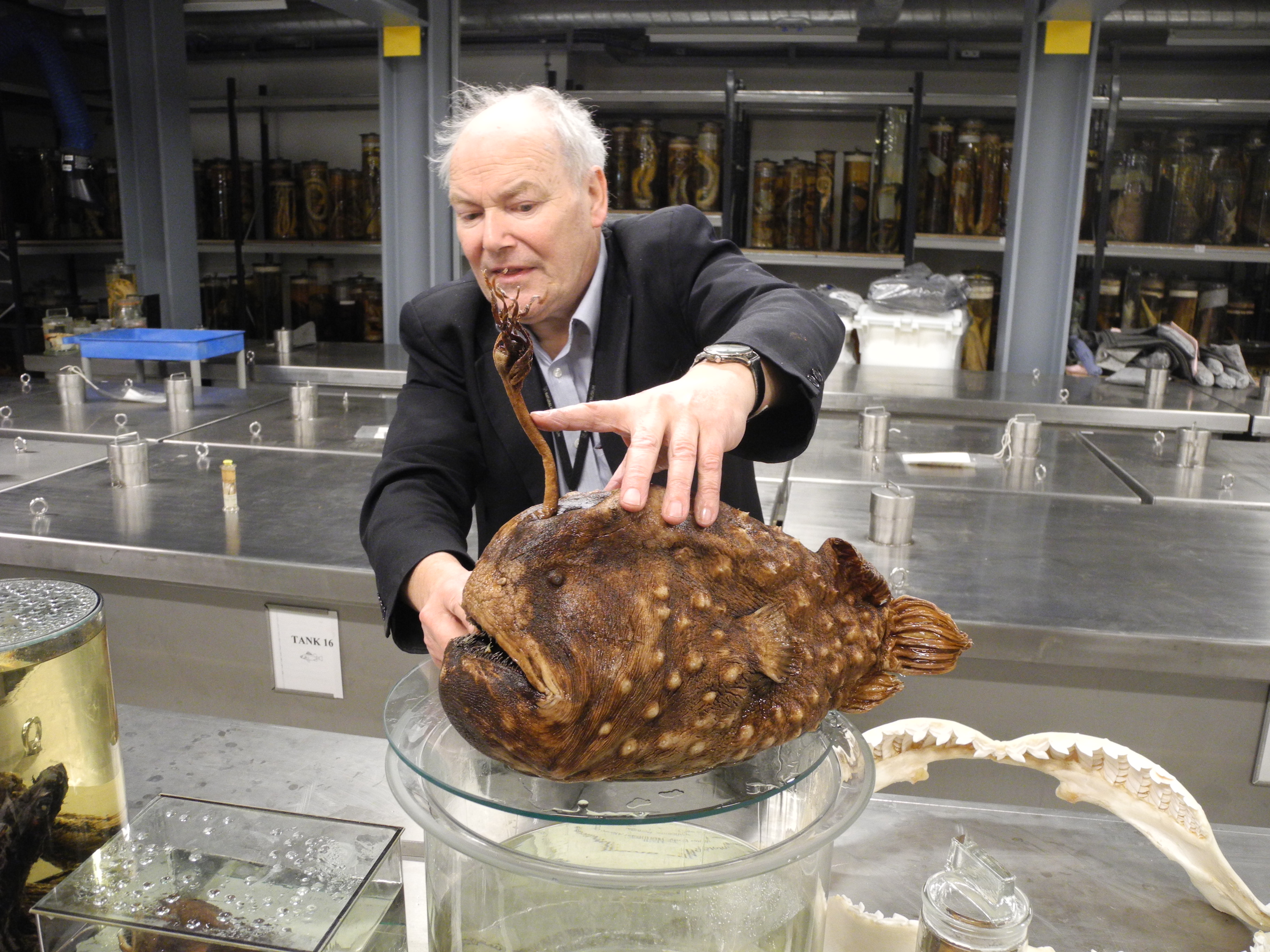
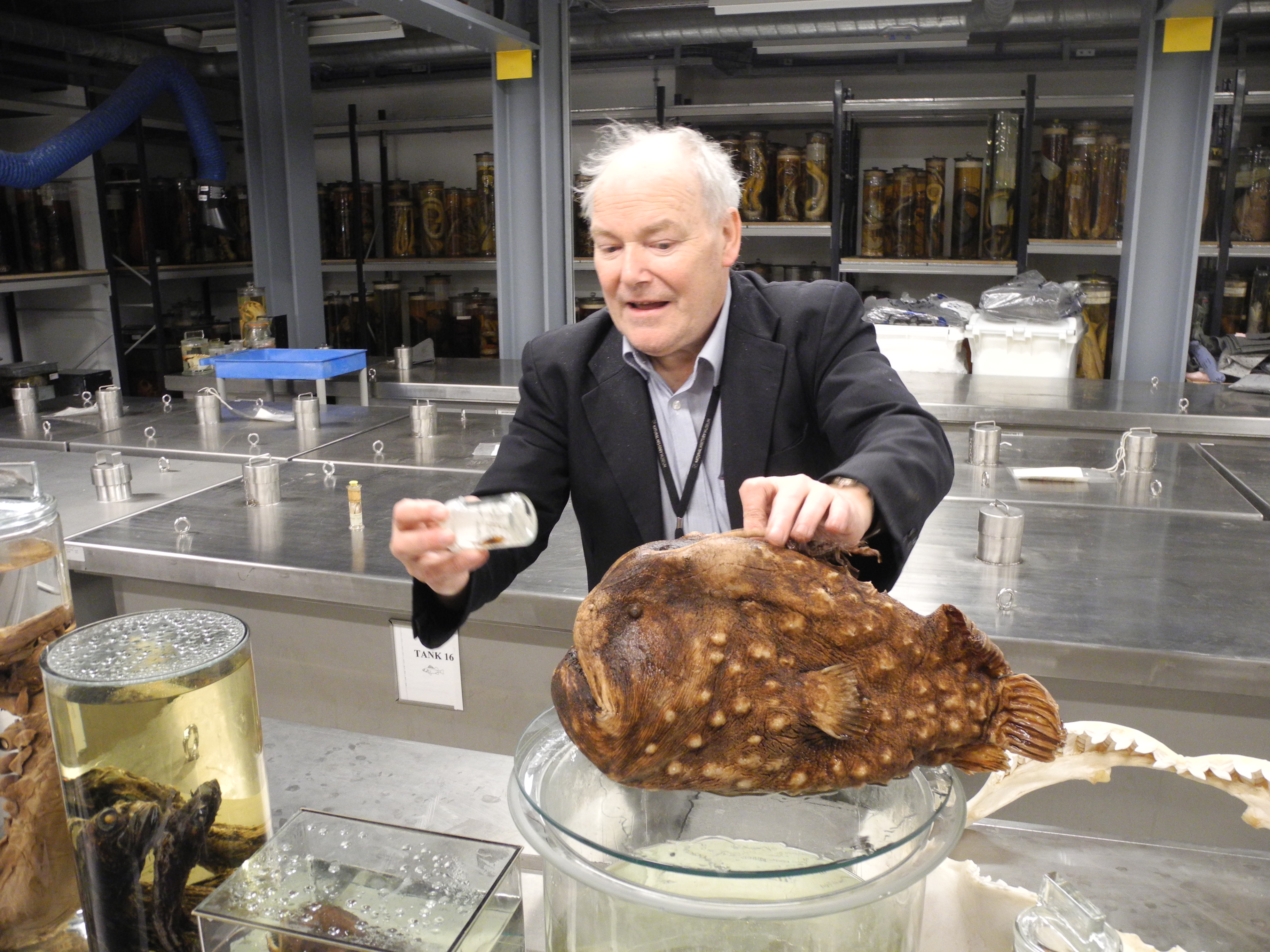 deep sea angler fish; male and female
deep sea angler fish; male and female
Behind Ollie as he talked was a huge tank containing a giant squid 8 metres long. In the middle of the room are rows of tanks each containing preserved specimens. The cover was hoisted to reveal several specimens including, a yellow fin tuna, caught off the welsh coast, arapaima, the huge head of a beluga sturgeon, a species that once swam in some of Britain’s rivers and may once again return if conditions and mankind allows, a manta ray caught off the Isle of Wight, an anglerfish, several species of shark and a sunfish.
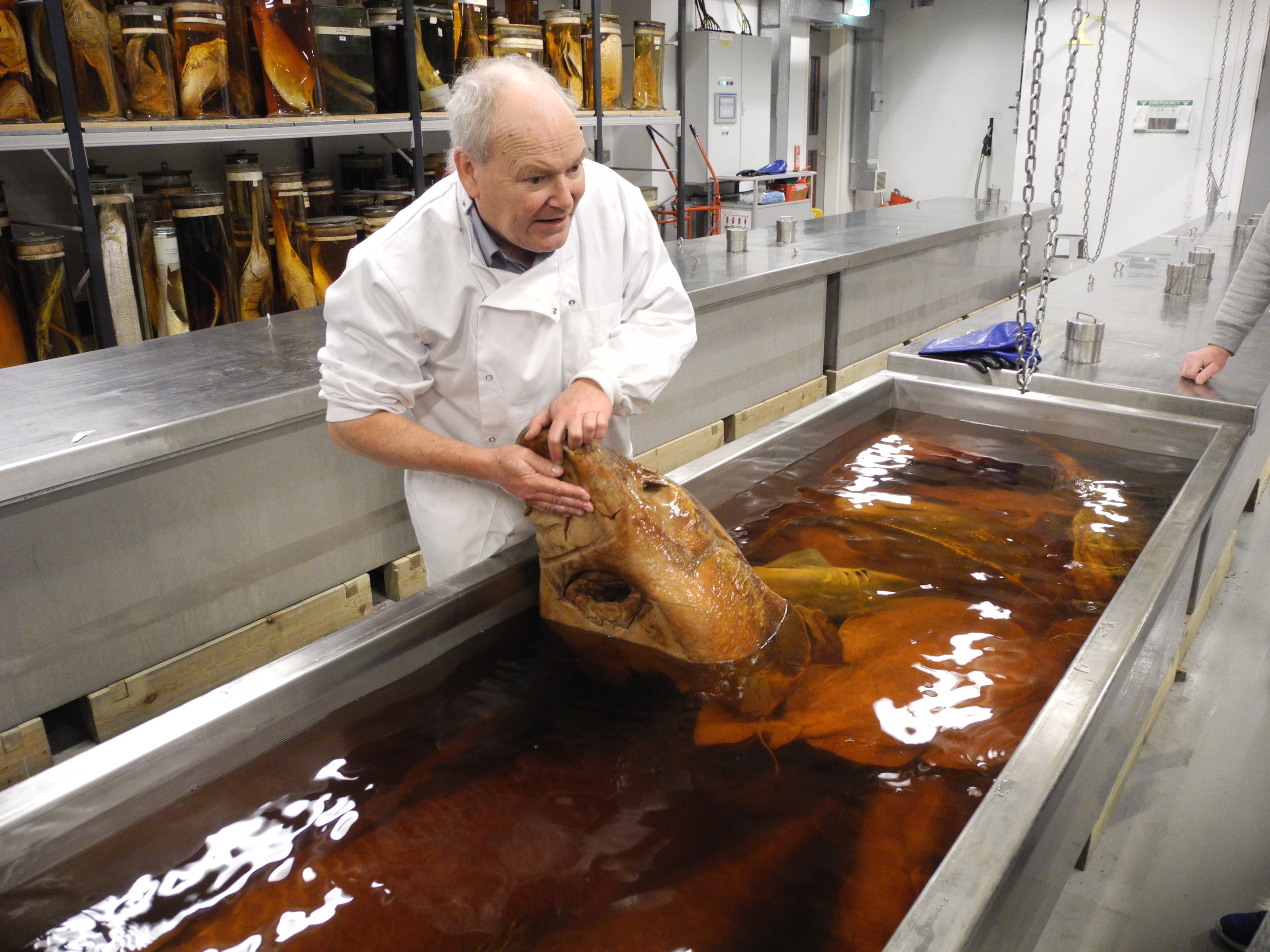
After this enlightened talk we circumnavigated the spirits room to gaze in awe at specimens preserved in jars brought back on Charles Darwin’s historical voyage aboard HMS Beagle. The rare Coelacanth specimen sat beside the body of a barracuda caught off the Lizard peninsula in Cornwall. A previous record-breaking bass of 19lb and the impressive folded carcass of a rare 11ft long oarfish found on a beach near Whitby.
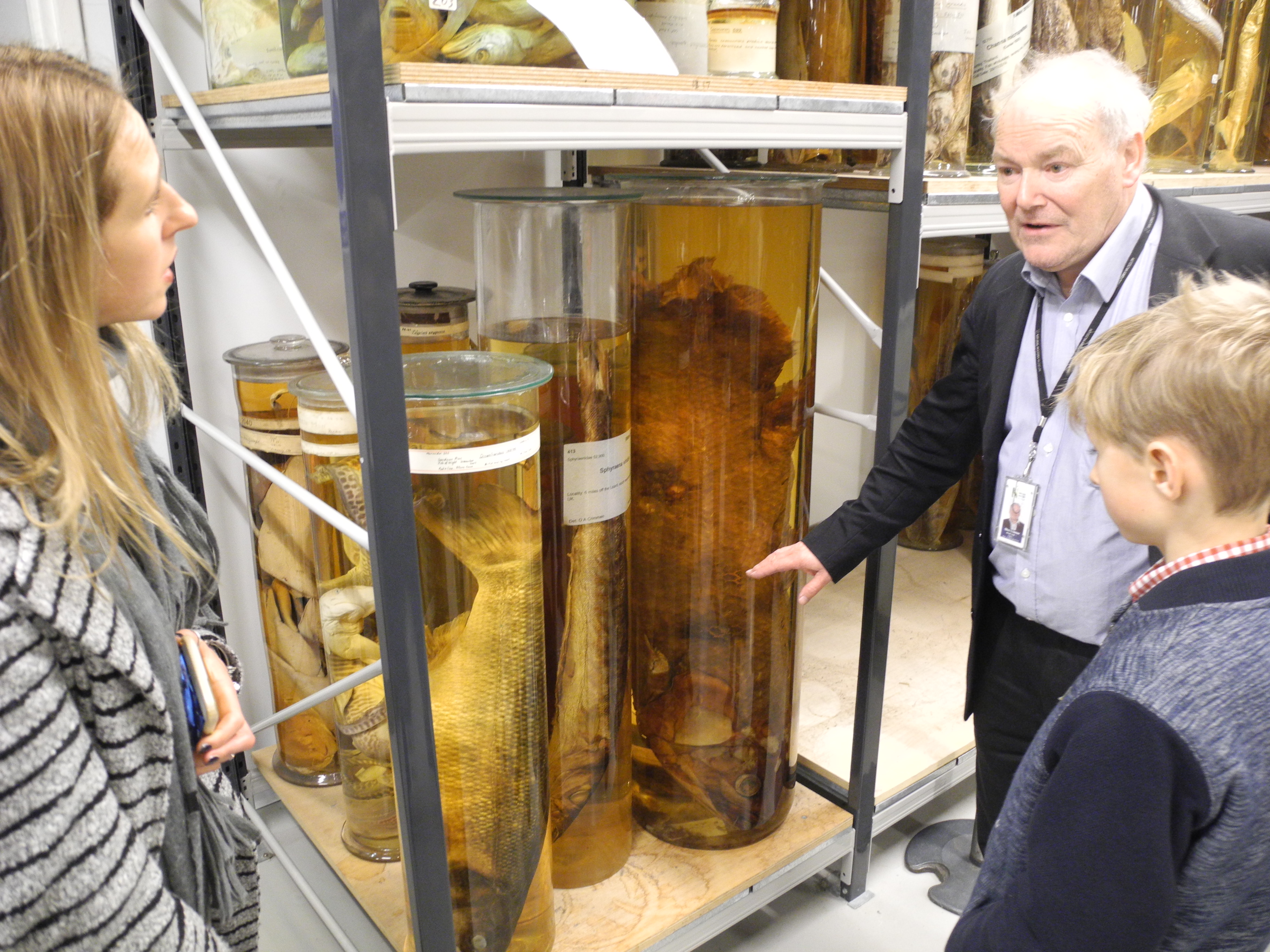
After the two-hour tour of the museums vast and mysterious archives the public viewing area seemed an anti-climax. The huge blue whale cast and numerous stuffed creatures are certainly impressive but nothing could match the experience we had been given behind the scenes.
It was a privilege to meet with Ollie Crimmen and listen to his vast range of stories relating to fish and the world in which they live. A world that we as anglers go prospecting in each time we cast a line. Who knows what mystery could be revealed on that next cast into the underwater world.
Keith and I would also like to thank Chris Vaughan for giving us this unique and unforgettable experience.



